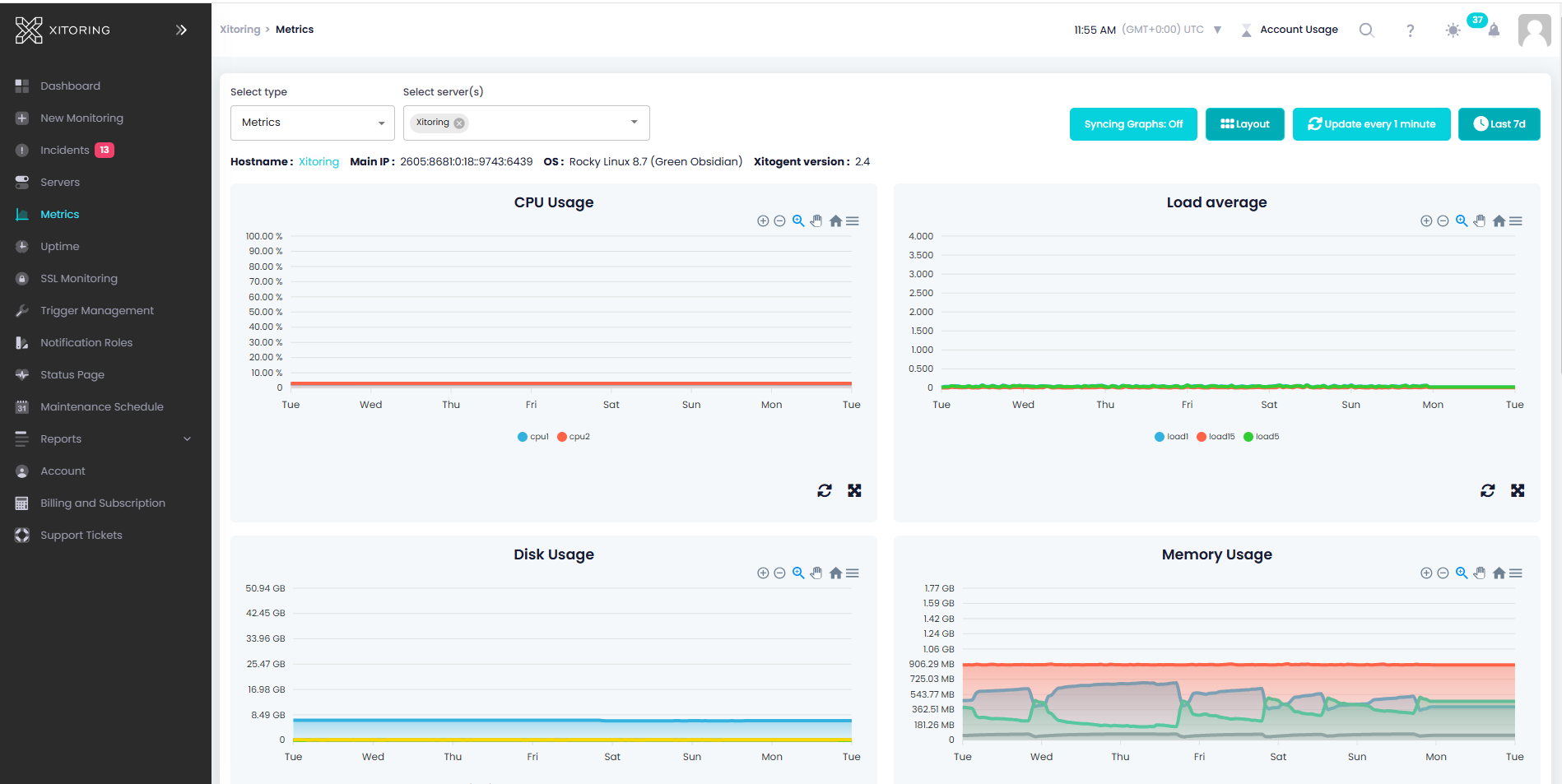Metrics
The Metrics page on Xitoring allows users to visualize and analyze server performance and integration data through interactive graphs. Users can select multiple servers for comparison, enabling a comprehensive view of their infrastructure's health and performance. 
Overview of Metrics
The Metrics page provides detailed insights into various aspects of your servers and integrations. Users can select from a variety of metric types and integration data to create informative visualizations. Key features include:
- Multiple Server Comparison: Select two or more servers to compare their metrics side-by-side.
- Integration Graphs: Visualize data from supported third-party integrations.
- Customizable Metrics: Choose from a variety of metric types to tailor your analysis.
Available Integration Types
Xitoring supports a range of integration types, each providing specific data points for analysis. The available types include:
- Nginx
- Netstat
- Apache
- PHP-FPM
- Redis
- KeyDB
- Supervisor
- Docker
- MySQL
- MongoDB
- HAproxy
- PostgreSQL
- IIS
- RabbitMQ
- Disk Health
- Varnish
- CouchDB
Metric Types
When metric type is selected, these graphs appear to provide insights into server performance:
- Load Average: Graphs appear showing the system's load over a specified period.
- CPU Usage: Graphs appear tracking the percentage of CPU capacity being used.
- Memory Usage: Graphs appear depicting the amount of memory being utilized.
- Disk Usage: Graphs appear that check the storage space usage on your disks.
- Disk I/O: Graphs appear analyzing input/output operations on disk.
- Network: Graphs appear viewing network traffic and usage patterns.
Using the Metrics Page
Selecting Metrics and Servers
- Choose a Metric Type: Use the metric selector to pick the type of data you wish to analyze.
- Select Servers for Comparison: You can choose multiple servers to compare their metrics simultaneously.
- View Integration Data: Access integration-specific graphs by selecting the desired integration type from the list.
Interacting with Graphs
- Zoom and Pan: Interact with graphs by zooming in for a detailed view or panning across time ranges.
- Apply Filters: Use time-based filters to adjust the data displayed (e.g., Last 24 hours, Last 7 days).
- Synchronize Graphs: Enable graph synchronization to apply interactions across multiple graphs for consistent analysis.
Filters and Options
- Graph Synchronization: metric page support synchronizing graphs. When enabled, interactions (e.g., zooming or panning) on one graph will apply to all graphs within the same page. This ensures consistent visualization across widgets.
- Change Layout: Choose from the following layouts:
- 2-column view.
- 3-column view.
- 4-column view.
- Interval Updates: Configure the time interval for fetching new data for graphs (e.g., every 1 minute, 5 minutes, etc.).
- Period Filters: Apply time-based filters to control the data displayed in the graphs (e.g., Last 24 hours,Last 7 days, etc.)
Reordering Widgets
Widgets can be rearranged using the drag-and-drop interface:
- Click and hold a widget.
- Drag it to the desired position.
- Drop the widget in place to reorder it.
Benefits of Metrics Visualization
- Comprehensive Monitoring: Gain a holistic view of server performance and integration data.
- Proactive Management: Identify potential issues early by monitoring critical metrics.
- Informed Decision-Making: Use data-driven insights to guide infrastructure and resource management.